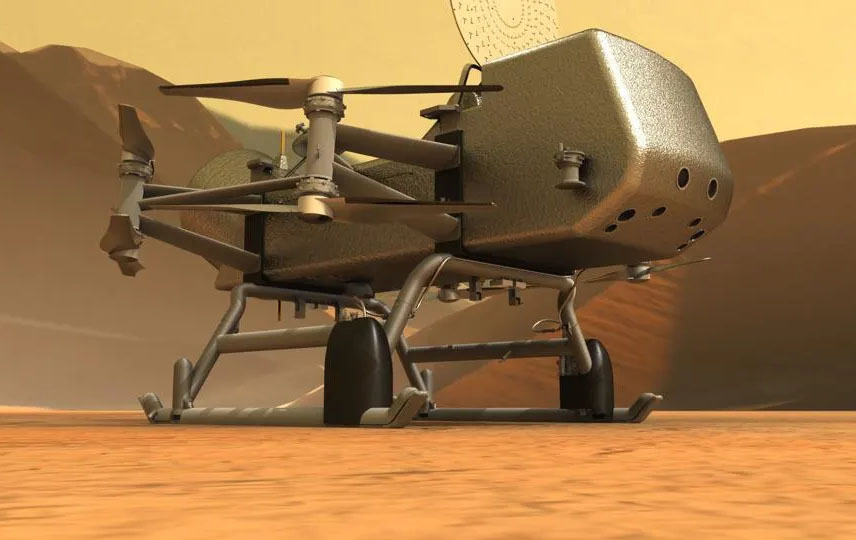
Photo Credit: File Photo
In the vast expanse of our solar system, there are worlds beyond our own waiting to be explored, and Titan, Saturn's largest moon, is one such enigmatic destination. In July 2028, NASA will embark on an unprecedented journey to Titan with its Dragonfly mission, a rotorcraft lander designed to unlock the secrets of this intriguing celestial body.
Dragonfly represents the pinnacle of NASA's frontier program, harnessing cutting-edge technology to navigate the diverse landscapes of Titan and delve into its mysterious environment. With its unique capabilities, Dragonfly will traverse Titan's surface, exploring a variety of locations to characterize the habitability of its environment and unlock the secrets of its complex chemistry.
At the heart of Dragonfly's mission are its surface and atmospheric science measurements, which will provide invaluable insights into Titan's composition and conditions. Equipped with a mass spectrometer, Dragonfly will analyze surface materials, producing biologically relevant compounds that could provide clues to the moon's potential for life.
Additionally, Dragonfly will use a neutron-activated gamma-ray spectrometer to measure the bulk element composition of Titan's surface, shedding light on its geological history and evolution. But Dragonfly's capabilities extend beyond surface analysis. With meteorology sensors, Dragonfly will monitor atmospheric and surface conditions, including diurnal and spatial variations, providing unprecedented insights into Titan's dynamic weather patterns.
Moreover, Dragonfly will utilize imaging to characterize geological features and perform seismic studies to detect subsurface activity and structure, unraveling the mysteries of Titan's interior. So why was Titan chosen as the destination for NASA's Dragonfly mission? The answer lies in the moon's unique characteristics and potential for scientific discovery. Titan is an ocean world, the only moon in our solar system with a dense atmosphere, and it supports an Earth-like hydrological cycle of methane clouds, rain, and liquid flowing across its surface to fill lakes and seas.
This abundance of complex organic material accessible on Titan's surface makes it an ideal destination for studying the conditions
necessary for the habitability of an extraterrestrial environment and the kinds of chemical interactions that occurred before life developed on Earth.
NASA's Dragonfly mission represents a bold step forward in our quest to understand the mysteries of our solar system. With its advanced instruments and pioneering technology, Dragonfly will unlock the secrets of Titan, revealing the untold stories of this distant world and expanding our understanding of the cosmos. As Dragonfly takes flight in July 2028, it will usher in a new era of exploration, pushing the boundaries of what is possible and inspiring future generations to reach for the stars.






















